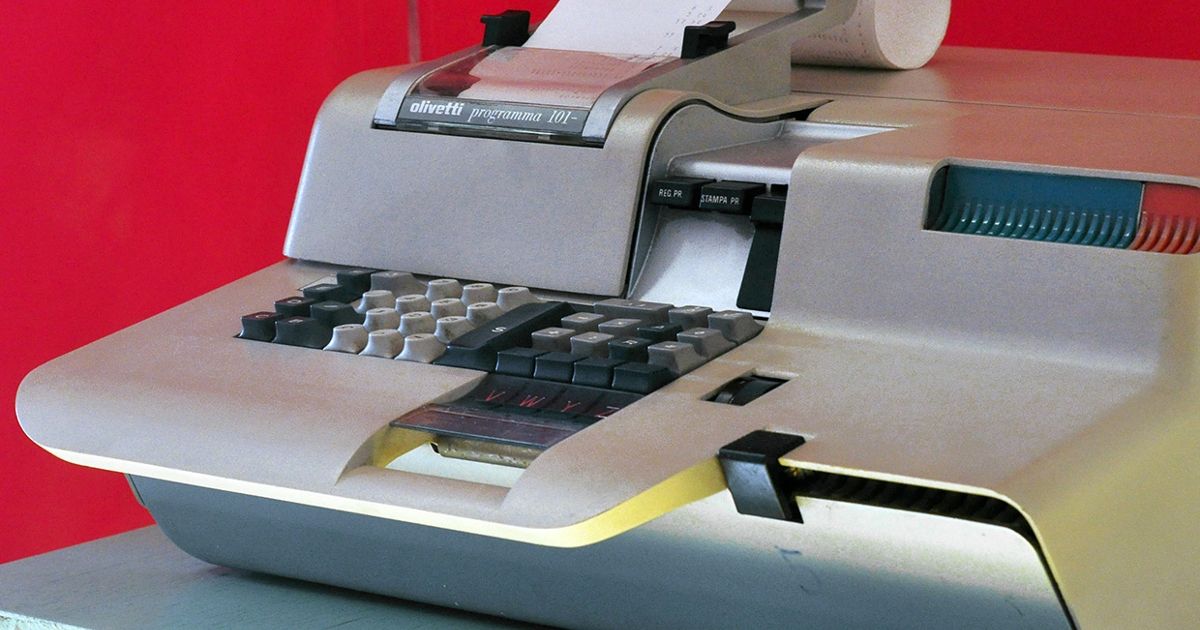
Introduced at a Business Equipment Manufacturers Association show in New York in October 1965, this programmable desktop calculator provedan immediate success. Also known as the P101 or the Perottina (after the chief engineer who designed it, Pier Giorgio Perotto), it eventually sold more than 40,000 units, primarily in the United States but also in Europe. NASA bought a number of P101s, which were used by engineers working on the 1969 Apollo11 moon landing.
Chief among the machine’s selling points was its portability. Roughly the size of an electric typewriter, it could be used in program mode like a computer, with stored instructions, while in manual mode it served as a high-speed calculator. Its memory consisted of a magnetostrictive delay line, which used pulses of sound traveling along a coil of nickel alloy wire to store numeric data and program instructions.
This kind of memory was used in several other small computers and calculators, including the Ferranti Sirius, a small business computer, and the Friden EC-130 and EC-132 desktop calculators. The P101 had a 36-character keyboard, a built-in mechanical printer, and a magnetic card reader/recorder, for storing and retrieving programs. Olivetti supplied a library of commonly used programs.
There was no display as such. The P101 used only high-level instructions, so programming it was extremely simple. As a promotional video proclaimed, “A good secretary can learn to operate it in a matter of days!”
The ad showed the P101 being used in a research lab, beside a swimming pool, and even at a betting hall.
Source: ieee.org